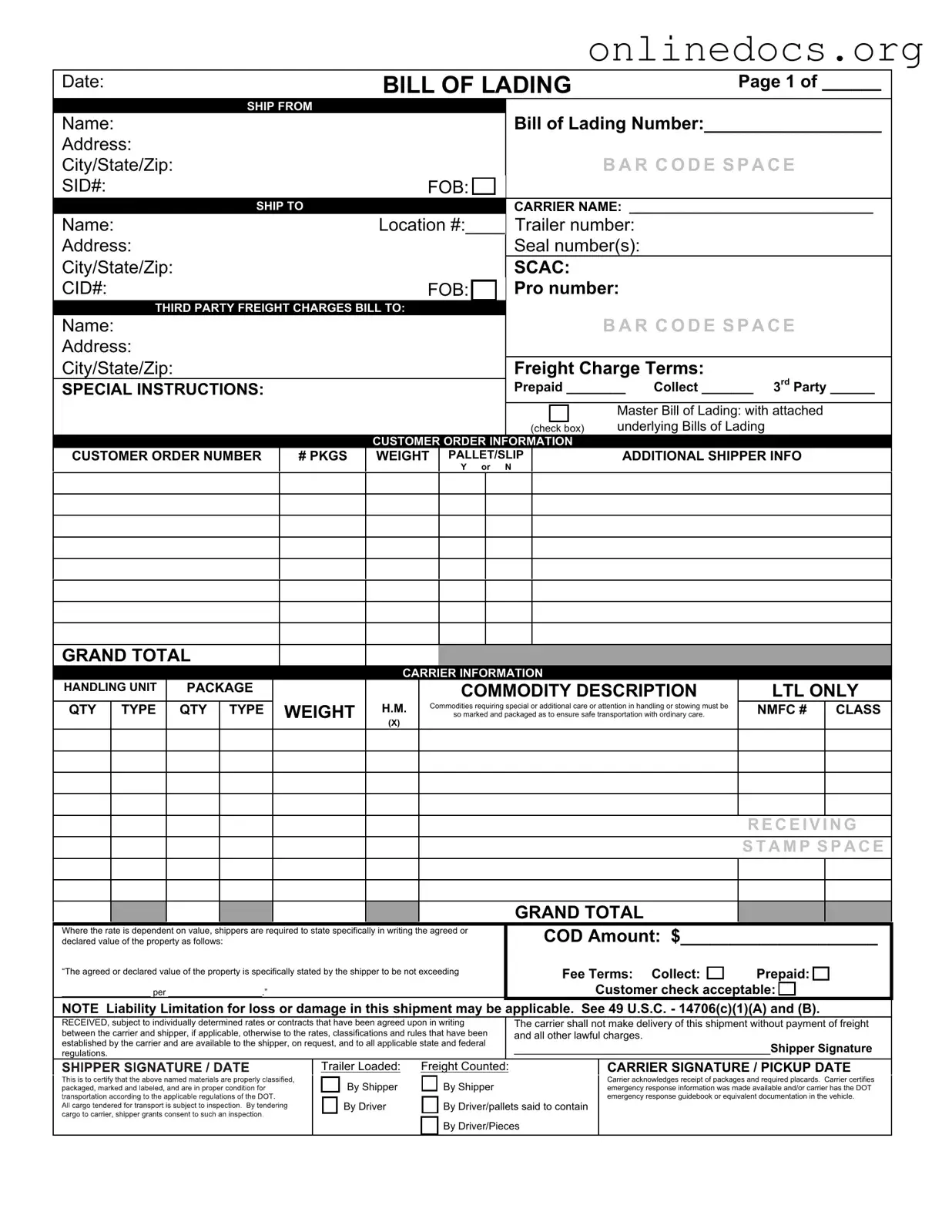The Bill of Lading (BOL) is often compared to a Freight Bill. A Freight Bill serves as an invoice for the transportation of goods. It details the services provided, including the costs associated with shipping. Both documents outline the specifics of the shipment, including the type of goods and the destination. While the BOL acts as a receipt and a contract between the shipper and the carrier, the Freight Bill focuses more on the financial transaction involved in the transport of goods.
Another document similar to the Bill of Lading is the Air Waybill. This document is used in air freight and serves a similar purpose to the BOL. It provides a receipt for the goods and outlines the terms of transport. Like the BOL, the Air Waybill is a contract between the shipper and the carrier. However, it is specifically tailored for air transport, making it distinct in terms of the regulations and procedures that apply to air freight.
The Packing List also shares similarities with the Bill of Lading. This document provides a detailed list of the items included in a shipment. It is often used alongside the BOL to ensure that all items are accounted for during transit. While the BOL serves as a legal contract, the Packing List is primarily for logistical purposes, helping both the sender and receiver verify the contents of the shipment.
For those looking to streamline their rental processes, understanding various documentation is essential. A Rental Application form plays a key role in this regard as it helps landlords effectively assess potential tenants. It is crucial to have access to accurate resources during this process, such as the one found at legalformspdf.com, which provides valuable guidance on creating and managing these forms.
The Delivery Receipt is another document that has a close relationship with the Bill of Lading. This document is signed by the recipient upon receiving the goods. It serves as proof that the shipment has been delivered in accordance with the terms outlined in the BOL. Both documents are crucial in confirming that the goods have been transported and received as agreed, but the Delivery Receipt specifically focuses on the final step of the shipping process.
Finally, the Certificate of Origin is similar to the Bill of Lading in that it is often required in international trade. This document certifies the country of origin of the goods being shipped. While the BOL details the transport and receipt of goods, the Certificate of Origin provides essential information regarding the product's provenance. Both documents can be critical for customs clearance and compliance with trade regulations.
